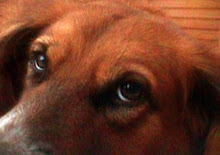Wenn ein Familienmitglied stirbt , betasten Elefanten den Toten stundenlang mit dem Rüssel, berühren ihn sanft mit dem Fuß oder versuchen ihn mit den Stoßzähnen hochzuheben.
Elefanten spielen auch mit den Knochen skelettierter Artgenossen und halten an Kadavern Totenwache. -
Elephants mourn.
When a family member dies, they touch the body of the dead elephant for hours with their trunks, touch it gently with their feet or try to lift it with their tusks.
National Geographic featured a video with elephants who mourn a 40-year-old female elephant. Male elephants, who have joined a herd, mourn too. (Sorry, unfortunately the link to the article does not work, you can only see the video .)
 Video screenshot
Video screenshotDen nachfolgenden Bericht über das Trauern um einen jungen Elefantenbullen hat mich sehr berührt, ebenso die Fotos von Kelly Landen von Elephants Without Borders.-
The following story about how elephants mourned a young elephant bull and the photos of Kelly Landen of Elephants Without Borders touched me deeply.
Elephants mourn the loss of a young bull
Chobe is not a zoo, but a living system. With all of the beauty, unfortunately there are also daily animal losses. This story will make use thing about how animals grieve. As you know, we support the work of Elephants Without Borders. The following article is a reprint from a blog story by Kelly Landen of EWB.
Whenever I tell people we spent the day on the river, they make comments on how they wish they could be there or how lucky we are. In most cases, I would agree, but today was an exception, as we bore witness to a very sad, yet extraordinary event.
Dr. Mike Chase left mid-morning to take Dr. Fred Bercovitch on the Chobe river to observe elephant behaviors. Unfortunately, I had work in the office to catch up on and chose to stay behind. A few hours later, I received a phone call from them, asking me to grab our “sampling kit,” which contains various vials, needles and formulas to attain blood, dung and tissue samples. They had just witnessed a young elephant bull die in front of them. Apparently, this young (about the age of 10,) lone bull had been walking along the river’s edge and when he was within close proximity to the boat, he fell to his knees and quickly toppled over and within a few shakes, he had died. I must admit, I was glad I was not there at the time.
I quickly grabbed my bags and drove up to the DWNP’s (Dept of Wildlife’s) office, to inform them about this event and that we were going to take blood samples to help them analyze what the possible cause of death may be. They were very receptive and said they would meet us there.After meeting up and attaining the samples, the DWNP officials departed and we decided to stay watch what the other elephants would do when encountering the body. He had died in a well-known focal area, where droves of elephants come to drink at the river’s edge and ingest the minerals of the calcrete soil on the banks.
 He tried moving the body with his feet. Soon, a young calf joined and became obsessed with the fallen one. The calf wrapped his trunk around the body for a long time, as if he was holding it and then he rubbed his body all over it. He remained with the body for well over a half hour, while other elephants one-by-one came over to briefly examine and sniff at it. After his reluctance to leave, he joined his family herd as they returned up the valley. Other herds came down and led by the large females, whole herds surrounded, circled and examined the body. Again, it was a young calf, a female, that became obsessed with the body, as she tried to climb over it, push it and try to move it. This went on the entire afternoon.
He tried moving the body with his feet. Soon, a young calf joined and became obsessed with the fallen one. The calf wrapped his trunk around the body for a long time, as if he was holding it and then he rubbed his body all over it. He remained with the body for well over a half hour, while other elephants one-by-one came over to briefly examine and sniff at it. After his reluctance to leave, he joined his family herd as they returned up the valley. Other herds came down and led by the large females, whole herds surrounded, circled and examined the body. Again, it was a young calf, a female, that became obsessed with the body, as she tried to climb over it, push it and try to move it. This went on the entire afternoon.
But it was a young adult female that finally brought tears to my eyes. She approached the body with caution, stretched her trunk out, as the others did before, but then her ears suddenly widened. She assertively shook her head, as if she recognized him and became extremely agitated. She dropped to her knees and kept pushing the body with her head, then she would get up, push it with her feet, circle it, lift up the trunk and the ears, circle it, shaking her head and then would drop to her knees and try again. She carried on and on, occasionally turning to her herd as if to ask for help. But they could do nothing but watch. Eventually the herd circled her, too, as if to say… “enough, come now” …and they slowly departed together, all leaving the valley for the body to lie alone.
It was a spectacle to watch, very sad, but also very curious. We knew that elephants mourn their dead, sometimes playing with the bones and carrying them around for days at a time and sometimes visiting the site of a carcass over and over. I even have witnessed, more than once, elephants protecting carcasses from predators and scavengers as best they can, for days on end. But it is never easy to watch, as one can sympathize, empathize and almost understand the sorrow and anguish they look to be feeling. It is on days like this, that one cannot help feel that we, as different species, are much more alike than cold science will likely ever be able to verify. (full story here)

Another Story of grief: Grace & Eleanor
There are a lot of stories to be found about the grief of elephants, stories of deep compassion like the one of Grace & Eleonor or the young hand-raised elephant who died of broken heart after her human 'mother' had to leave her for a while. Elephants never forget...and they are much more similar to us as they were widely thought to be. High time to change some of our andro-centered misconceptions...Und hier 2 Nachrichtenmeldungen, die ich fand, in denen es auch um das Trauern von Elefanten ging.
Elefanten vergessen nie. Mit ihrer Fähigkeit tiefe soziale Bindungen einzugehen, auch zu Menschen, und ihrer Fähigkeit zu trauern stellen sie die weitverbreitete Annahme auf den Kopf, dass nur wir Menschen in der Lage sind zu komplexen Gefühlsverbindungen. Es ist Zeit umzudenken.
- Die Seele der Savanne - Was wilde Tiere fühlen/ Gabriele Staebler- Bucher Verlag
- Wenn Elefanten trauern/ZeitOnline 09.12.2008
(14 Fotos aus dem Bildband Die Seele der Savanne – Was wilde Tiere fühlen/Gabriele Staebler)
- Elephants mourn the loss of a young bull/P.B.Eleazer 07.12.2009
- Von Affenliebe und Krokodilstränen/Hamburger Abendblatt 17.05.2008
- Fühlen Tiere so wie Menschen?/Michael Odenwald -Focus 26.12.2008
- Elephant burial/multiply 'Elephant' page (Grace & Eleanor)
- Trauernde Elefanten überfallen ein Dorf/Welt 24.05.2004
- Trauernde Elefanten randalieren auf Autobahn/Spiegel 13.01.2006
- Elephants with broken hearts/ Daily Mail 16.08.2006
Video credits:
- National Geographic
Related postings:
- Trauer um Affen....Affentrauer - George & Gombe, Gana & Claudio/04.02.2009
- Gana ist tot...RIP/17.01.2010
- Two old ladies - Vilya und Ruaha RIP! /07.08.2010
Learn more about Elephants Without Borders

















































Keine Kommentare:
Kommentar veröffentlichen